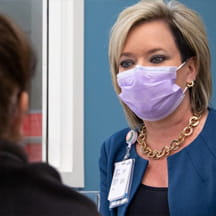The novel coronavirus (COVID-19) has changed nearly every aspect of life, and for many areas in the U.S., the worst is likely yet to come. Children's hospitals around the country are mobilizing their pandemic response plans—in many cases not only to provide care for their pediatric populations but also help alleviate the strain on adult health care facilities.
Children's Hospitals Today caught up with Paul Kempinski, M.S., FACHE, president and chief executive officer at Children's Mercy in Kansas City, Missouri, to discuss his team's pandemic response and how children's hospitals can support their communities during this outbreak.
As of now, COVID-19 is generally a more serious health threat to adults than children, yet of course children's hospitals need to adjust and make contingency plans. What is Children's Mercy doing to address the pandemic?
We're in a very interesting and unprecedented time right now. We as children's hospitals have taken all the appropriate protective actions in terms of canceling elective surgeries and canceling or transitioning clinic visits into a telemedicine type of environment.
Seeing the overall reductions in inpatient and other activity positions us to be an important player in the community in terms of creating additional surge capacity to assist the adult centers that either have experienced or may experience the impact of COVID-19 as it continues to migrate across the country.
Internally, we've activated our emergency preparedness plan. We meet at least daily—usually several times daily—to plan, prepare, coordinate, communicate and make decisions on policy, practice and protocol.
Externally, we are part of regional planning that is going on here. Kansas City hasn't felt the surge needs yet, but we are in a preparation stage and anticipating that. That's where I believe as a children's hospital, Children's Mercy can play an instrumental role.
The first step—which CHA hospitals have been advocating for—is a Tier One response. That would be to take the children who are being cared for in adult hospitals and transfer them to the children's hospital where the capabilities exist to continue to manage their care well. That creates immediate surge capacity for the adult centers.
A Tier Two response that our organization is anticipating and prepared to act on is raising our age threshold to maybe 25 or 26 years old. This would create additional surge capacity for the adult centers by sending us their younger adults, which we are equally ready to care for with competency and capability. We're anticipating some other actions using our far-reaching system to create opportunities for partnership and collaboration across the community.
How do you reassure your staff in such an unprecedented and difficult time?
It calls on us as leaders to take our leadership to the next level, and there are formal ways we can do that. Every day, we are communicating with our employees internally and our community stakeholders externally. We do that using social media and all the available formal and technology-based communication mechanisms.
Candidly, the most effective way of communicating and engaging our employees is for us as leaders to be out there and visible. I told our team that while we need to be practicing social distancing, we cannot practice leadership isolation. If there is ever a time when we as leaders must be visible and out there talking directly with our employees and our stakeholders, this is the time to do that.
I can't tell you how impactful it is for staff members just to have the CEO there and talking with them. Not just leader-to-staff, but human-to-human. That's the most powerful means of communication we have.
The first thing someone sees when visiting the Children's Mercy website is the message of "LOVE WILL." Although it's a longtime principle of the hospital's mission, it seems especially fitting now. How does that sentiment drive the work that you and your team do at Children's Mercy?
I think "LOVE WILL" is the perfect description of our culture and our history as an organization. Love was foundational to the way this organization started and the way we continue to operate.
One of our values is kindness. You won't always see that as a core value in an organization—health care or otherwise—but it perfectly depicts the spirit, passion, compassion and the way we relate with one another. To bring that forward to our current state as we deal with this pandemic, it is the linchpin of how we are managing and supporting one another through this turbulent and unprecedented time.
I think our new physician-in-chief, Rob Lane, summed it up very well. He said, "When we get through this—well through it, like 10 years from now—we want our employees who are here and remain here to be able to look back upon this pandemic and say, 'Despite how challenging and how difficult it was, our organization cared for us. It had to make tough decisions. We didn't always agree, but we got through this and our collective soul and our culture remained intact—if, in fact, it didn't elevate as a result of it.'"
That's the way we want to be able to look back and tell the story. Time will tell, but I believe we're well-positioned to do that.


